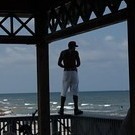Vuescan Help
-
Recently Browsing 0 members
- No registered users viewing this page.
-
Similar Content
-
- 15 replies
- 359 views
-
- 3 replies
- 269 views
-
- 2 replies
- 320 views
-
- 8 replies
- 571 views
-
- 11 replies
- 1,919 views
-





Recommended Posts
Join the conversation
You can post now and register later. If you have an account, sign in now to post with your account.
Note: Your post will require moderator approval before it will be visible.